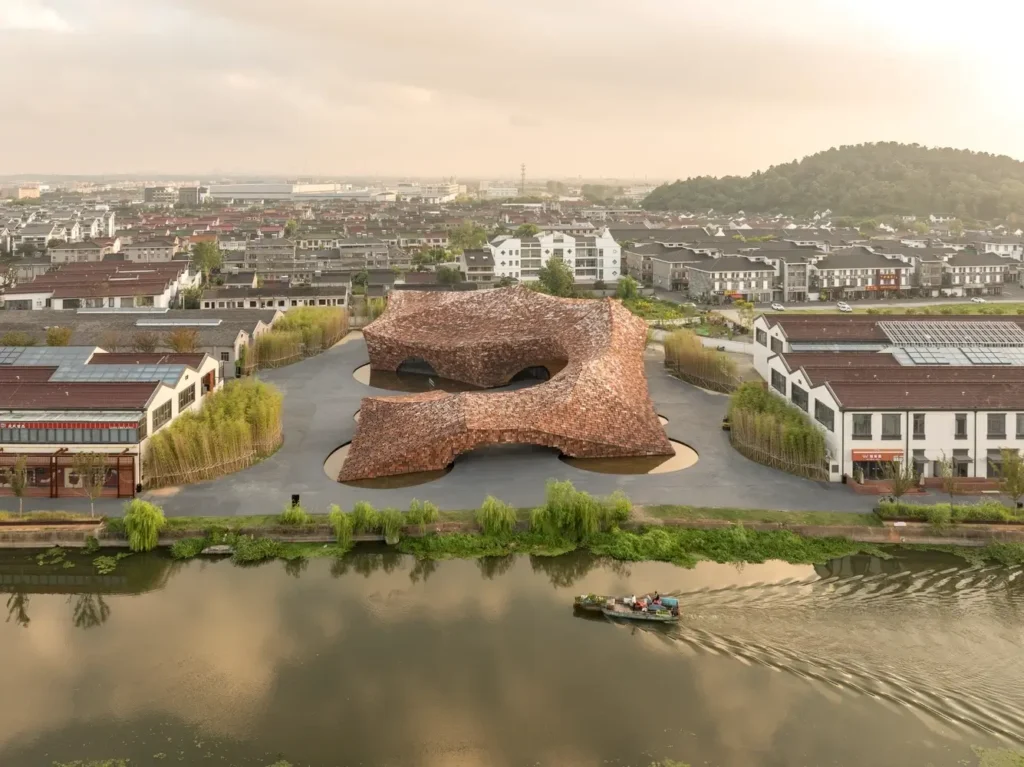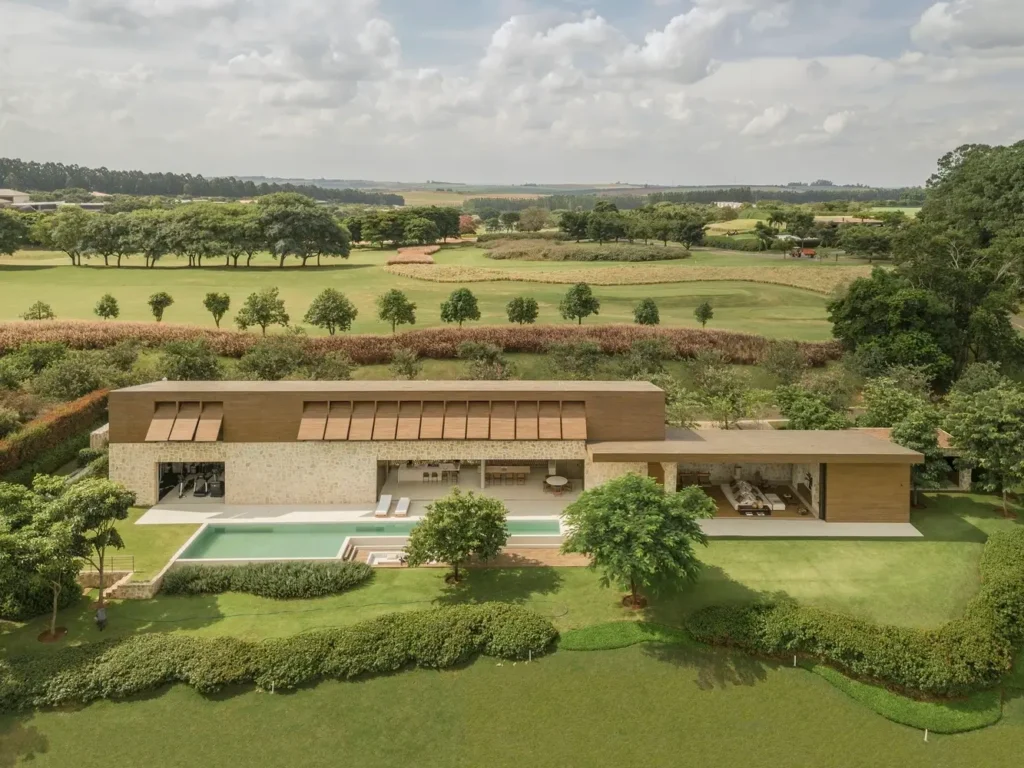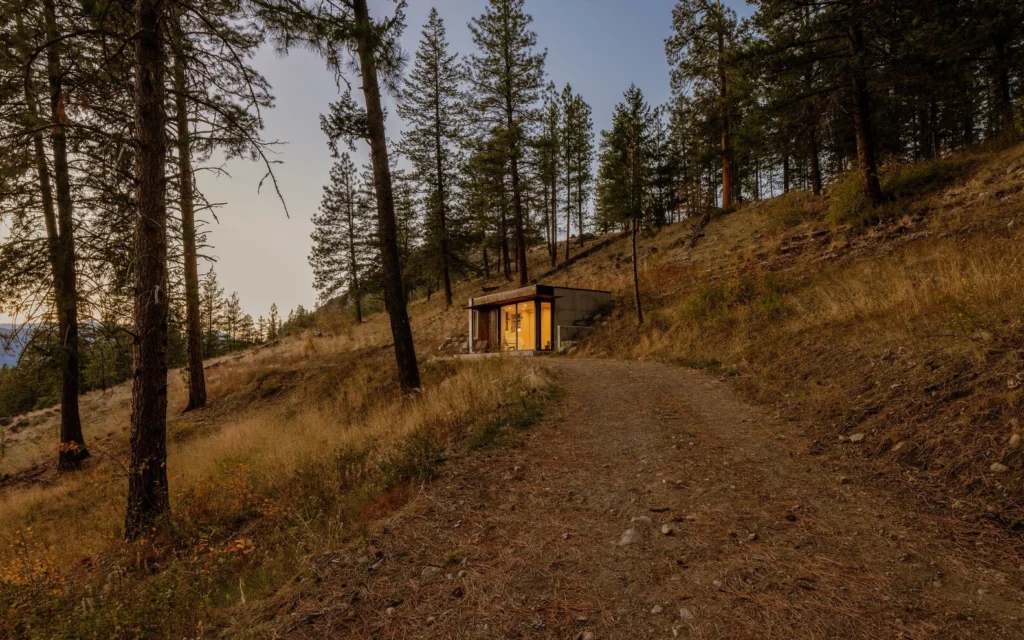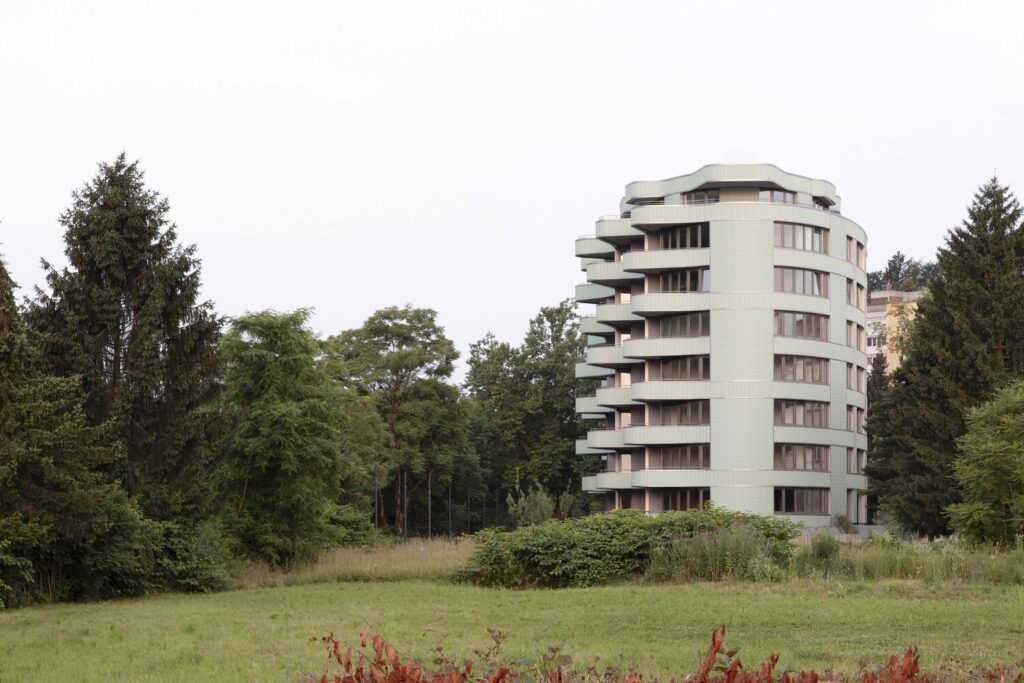
Introduction
The UCCA Clay Museum by Kengo Kuma & Associates stands as a compelling architectural statement that exemplifies contemporary museum design while honoring the fundamental properties of its namesake material. Located in China as part of the prestigious UCCA Center for Contemporary Art network, this remarkable structure represents a profound evolution in Kengo Kuma’s architectural philosophy and his ongoing exploration of materiality, texture, and the relationship between built form and natural elements.
The museum’s distinctive perforated clay facade immediately identifies it as a Kengo Kuma design, yet it also speaks to deeper architectural intentions: creating a permeable boundary between inside and outside, establishing a dialogue with traditional Chinese building practices, and celebrating the tactile qualities of natural materials. As a space dedicated to contemporary art, the Clay Museum demonstrates how thoughtful architecture can enhance artistic experience while becoming a cultural destination in its own right.
This architectural analysis explores how the UCCA Clay Museum embodies Kengo Kuma’s design principles, its contribution to contemporary Chinese museum architecture, and its significance as both a cultural institution and a masterclass in material-focused design.
Kengo Kuma’s Architectural Philosophy
To fully appreciate the UCCA Clay Museum, one must understand the distinctive design philosophy that has established Kengo Kuma as one of the most influential architects of our time. Kuma’s approach is characterized by several guiding principles that are elegantly manifested in this project:
Material Honesty and Exploration
Kengo Kuma’s architecture is fundamentally concerned with the honest expression of materials. Unlike many contemporary architects who pursue form as their primary concern, Kuma begins with a deep investigation of materials—their inherent properties, cultural associations, and sensory qualities. His fascination with natural materials, particularly wood and stone, has expanded to include innovative applications of traditional materials like the clay tiles featured prominently in the UCCA Clay Museum.
This material-first approach represents a distinctive aspect of Kengo Kuma’s museum design philosophy—creating spaces that engage visitors not just visually but through multiple senses, particularly touch. The textured surfaces of the Clay Museum invite a haptic appreciation that complements the visual art contained within.
“Erasing Architecture”
Paradoxically for a Pritzker Prize-nominated architect, Kuma often speaks of “erasing architecture”—creating buildings that blur the boundaries between structure and environment rather than standing as monuments to human intervention. This philosophy manifests in the UCCA Clay Museum through its porous facade, which dissolves the building’s mass into a play of light and shadow, and through careful integration with its landscape context.
The Clay Museum achieves this “erasure” not through literal invisibility but through a dematerialization effect created by the perforated clay elements, which break down the monolithic quality that characterizes many museum buildings. This approach creates a more humble, approachable architecture that serves the art rather than competing with it.
Particlization and Pattern
A recurring strategy in Kengo Kuma’s architecture is what he terms “particlization”—breaking down architectural elements into smaller components that create rich textural effects and allow for complex environmental interactions. The clay tile facade of the UCCA Clay Museum exemplifies this approach, with thousands of individual elements working together to create a unified yet intricate building envelope.
This particlization creates a distinctive rhythm and pattern that has become a hallmark of Kengo Kuma’s museum designs. The resulting effect transforms what could be an imposing institutional building into a vibrant, breathing entity that changes in appearance throughout the day as light conditions shift.
Connection to Tradition
Despite his thoroughly contemporary sensibility, Kuma maintains a profound connection to architectural traditions, particularly those of his native Japan and, in projects like the UCCA Clay Museum, the building traditions of the local context. By using clay—one of humanity’s oldest building materials—in an innovative way, Kuma creates a bridge between traditional Chinese architecture with its emphasis on earthen materials and contemporary design possibilities.
This respect for tradition coupled with innovative application defines Kuma’s contribution to contemporary Chinese museum architecture and establishes the Clay Museum as a building that is simultaneously of its time and timeless.
Architectural Analysis of the UCCA Clay Museum
The Clay Facade: Material as Protagonist
The most striking feature of the UCCA Clay Museum by Kengo Kuma is undoubtedly its extraordinary facade composed of overlapping clay tiles. This architectural skin functions on multiple levels:
Material Innovation
The clay tiles represent a technical innovation in museum architecture. Rather than using clay in its traditional solid form (as brick or terra cotta), Kuma’s design team developed a system of thin, overlapping clay elements that can be arranged in varying densities. This approach transforms clay from a heavy, load-bearing material into a lightweight, permeable screen.
The tiles themselves are subtly varied in tone—ranging from warm ochre to deep umber—creating a rich, earth-toned palette that connects the building to the surrounding landscape. This material choice makes a powerful statement about contemporary clay architecture, demonstrating how traditional materials can be reimagined for modern applications.
Environmental Response
The perforated facade serves crucial environmental functions. The overlapping arrangement creates a brise-soleil effect, filtering harsh sunlight and reducing solar gain while still allowing natural illumination to penetrate the interior spaces. This passive environmental strategy reflects Kengo Kuma’s commitment to sustainable design principles and contextual sensitivity.
Additionally, the facade’s porosity permits natural ventilation, reducing the building’s reliance on mechanical systems in appropriate weather conditions—an intelligent response to China’s varied climate and a statement about sustainable museum design.
Light and Shadow Play
Perhaps the most poetic aspect of the clay tile facade is the mesmerizing light and shadow effects it creates throughout the interior spaces. As sunlight filters through the thousands of perforations, it casts ever-changing patterns across floors and walls—a dynamic design element that activates the museum’s interior spaces and creates a contemplative atmosphere conducive to art appreciation.
This choreography of light transforms the museum throughout the day, creating what Kuma has described as “an architecture of time”—spaces that are never static but respond continuously to changing external conditions. This quality makes each visit to the UCCA Clay Museum a unique experience, encouraging repeated engagement.
Spatial Composition and Flow
The UCCA Clay Museum’s spatial organization reflects Kengo Kuma’s masterful understanding of human movement and perception:
Sequential Discovery
The museum layout eschews the monumental central atrium common in contemporary museum architecture in favor of a more nuanced sequence of spaces that unfold gradually. Visitors move through a carefully choreographed series of galleries, transitional zones, and courtyards that create a rhythm of compression and release, intimacy and expansiveness.
This approach to spatial design has deep roots in traditional Eastern architecture, particularly the Japanese concept of ma (間) or “interval space,” which Kuma often incorporates into his projects. By translating these principles into the context of a contemporary Chinese museum, Kuma creates a visitor experience that is subtly different from Western museum paradigms.
Gallery Spaces
The exhibition spaces within the Clay Museum demonstrate Kengo Kuma’s sensitivity to the needs of contemporary art display. Rather than creating uniform “white cube” galleries, the design provides a variety of spatial conditions—different ceiling heights, lighting qualities, and proportions—that can accommodate diverse artistic expressions from intimate works to large-scale installations.
This flexibility serves the UCCA Center for Contemporary Art’s mission to present cutting-edge work across media. The galleries balance neutrality (necessary for art display) with distinctive architectural character, creating spaces that enhance rather than compete with the exhibited works.
Circulation as Experience
The circulation throughout the UCCA Clay Museum is conceived not merely as a means of moving between galleries but as an integral part of the visitor experience. Transitional spaces feature framed views of the landscape, glimpses of the clay facade from the interior, and moments of pause that allow for reflection between exhibitions.
This thoughtful approach to circulation reflects Kengo Kuma’s museum design philosophy of creating holistic experiences rather than simply containers for art. The result is a building that guides movement intuitively while offering moments of surprise and discovery.
Integration with Landscape
The relationship between building and landscape is fundamental to the UCCA Clay Museum’s design concept:
Dissolving Boundaries
Rather than positioning the museum as an object isolated from its surroundings, Kengo Kuma & Associates created a design that deliberately blurs the distinction between interior and exterior. The perforated clay facade serves as a permeable membrane rather than a rigid boundary, allowing visual connections and filtered light to maintain a constant dialogue with the outdoors.
This approach reflects broader trends in contemporary museum architecture toward greater environmental integration, but Kuma’s execution is distinctively subtle and sophisticated. The building seems to emerge from its site rather than imposing itself upon it.
Landscape as Extension
The landscape design surrounding the Clay Museum functions as an extension of the architectural concept. Gardens, water features, and exterior gathering spaces are integrated into the overall composition, creating a seamless transition between built form and natural elements.
This integration offers visitors multiple ways to experience the museum—as a sequence of interior galleries, as a journey through landscape punctuated by architecture, or as a dynamic interplay between the two. This multifaceted approach enhances the museum experience and expands its appeal beyond traditional art audiences.
Seasonal Responsiveness
Like many of Kengo Kuma’s projects, the UCCA Clay Museum was designed to respond to and celebrate seasonal changes. The building’s relationship with its setting transforms throughout the year—from the play of shadows through deciduous trees in winter to the reflection of summer greenery in water features and glass surfaces.
This seasonal responsiveness connects the architecture to natural cycles and ensures that the museum remains a dynamic, ever-changing destination that rewards repeated visits.
Material Palette and Detailing
Beyond the signature clay facade, the UCCA Clay Museum features a carefully considered material palette that reinforces Kengo Kuma’s design philosophy:
Complementary Materials
While clay is unquestionably the protagonist in this architectural composition, Kengo Kuma & Associates introduced complementary materials to create a balanced, harmonious whole:
- Wood: Warm timber elements appear in strategic locations, particularly in transitional spaces and areas where visitors come into direct contact with the building. This creates a tactile counterpoint to the clay elements and references traditional Chinese wooden architecture.
- Glass: Precisely detailed glazing establishes visual connections between interior spaces and to the exterior while maintaining environmental performance. The transparency of glass is used judiciously, creating meaningful moments of revelation rather than ubiquitous exposure.
- Concrete: Exposed concrete elements provide structural clarity and a neutral background that allows the more expressive clay elements to take center stage. The concrete surfaces are treated with subtle texture that resonates with the materiality of the clay tiles.
- Water: Although not a construction material in the conventional sense, water features are integrated into the design as reflective surfaces that amplify the play of light and extend the sensory experience of the architecture.
This material palette exemplifies Kengo Kuma’s approach to contemporary museum design—using a limited selection of materials in thoughtful combinations to create rich, layered experiences.
Craftsmanship and Detail
The UCCA Clay Museum demonstrates exceptional attention to detail, particularly in the junctions between different materials. These transitions are handled with a precision that reflects Kengo Kuma’s Japanese design sensibility while incorporating Chinese craft traditions.
Notable details include:
- The varying arrangements of clay tiles to create different degrees of transparency and opacity
- The subtle reveals where the facade system meets other building elements
- The integrated lighting that enhances the textural qualities of the clay at night
- The carefully considered thresholds between different floor materials that signal transitions between spaces
This level of refinement elevates the Clay Museum beyond merely innovative concept to exemplary architectural execution, establishing it as a significant contribution to contemporary Chinese museum architecture.
The Museum Experience
Beyond its architectural merits, the UCCA Clay Museum by Kengo Kuma was conceived first and foremost as a cultural institution. The design directly shapes the experience of art in several key ways:
Atmospheric Quality
The filtered light through the clay tile facade creates a distinctive atmosphere within the galleries—one characterized by soft, diffused illumination rather than the harsh brightness often found in contemporary art spaces. This quality of light creates ideal viewing conditions for many types of art while establishing a contemplative mood that encourages careful observation and reflection.
The material presence of the architecture—particularly the textural richness of the clay elements—creates a multisensory environment that contrasts with the typical “white cube” approach to gallery design. This atmosphere contributes to a more embodied, memorable museum experience.
Pacing and Rhythm
The spatial sequence of the UCCA Clay Museum establishes a carefully calibrated rhythm that enhances art appreciation. Alternating between more intimate galleries and expansive spaces, the design provides natural moments of intensity and repose that prevent the visual fatigue common in many museum visits.
Transitional spaces between galleries offer opportunities for mental processing and palette-cleansing, while strategic views to the exterior provide contextual reorientation. This thoughtful pacing reflects a deep understanding of visitor psychology and the cognitive demands of engaging with contemporary art.
Curatorial Flexibility
While architecturally distinctive, the Clay Museum avoids the common pitfall of creating spaces so dominating that they dictate curatorial possibilities. Kengo Kuma’s design allows for flexible use of the galleries through adaptable lighting systems, movable partitions, and technical infrastructure that can support diverse media from traditional paintings to digital installations.
This balance between architectural character and curatorial flexibility ensures that the UCCA Center for Contemporary Art can fulfill its mission of presenting groundbreaking exhibitions without being limited by the building itself.
Cultural and Contextual Significance
UCCA Center for Contemporary Art Context
The UCCA Clay Museum represents an important expansion of the UCCA Center for Contemporary Art, one of China’s most influential contemporary art institutions. Founded in 2007, UCCA has played a pivotal role in developing China’s contemporary art scene and connecting it to global discourse.
The selection of Kengo Kuma & Associates to design this museum signifies UCCA’s commitment to architectural excellence and recognition of the importance of the building itself as a cultural statement. The Clay Museum extends UCCA’s physical presence beyond its original Beijing location, part of a strategic expansion to reach new audiences and provide specialized exhibition contexts.
Contemporary Chinese Architecture Context
The UCCA Clay Museum enters into dialogue with broader developments in contemporary Chinese museum architecture. Over the past two decades, China has experienced an unprecedented museum building boom, with hundreds of new institutions opening annually. Within this context, architectural quality has become increasingly important as a means of differentiation and cultural positioning.
By engaging Kengo Kuma, an internationally renowned architect with deep understanding of Asian architectural traditions, UCCA aligned itself with a sophisticated approach to contemporary museum design—one that balances innovation with cultural sensitivity. The Clay Museum stands apart from more flamboyant architectural statements that characterize some recent Chinese cultural buildings, offering instead a model of thoughtful materiality and contextual response.
Material Innovation in Chinese Architectural Context
The use of clay as the primary expressive material connects the museum to China’s rich tradition of earthen architecture—from ancient rammed earth structures to traditional brick construction—while demonstrating contemporary possibilities for this historically significant material. This connection to traditional building practices gives the UCCA Clay Museum a cultural resonance that more technologically-focused contemporary architecture often lacks.
This material choice also aligns with growing interest in sustainable building practices within China. By reimagining a local, low-carbon material for contemporary application, Kengo Kuma’s design offers a model for environmentally responsive architecture that doesn’t sacrifice cultural significance or aesthetic impact.
Kengo Kuma’s Signature Style in the Clay Museum
The UCCA Clay Museum exemplifies several recurring themes in Kengo Kuma’s architecture while representing a specific evolution of his design language:
Material Transformation
Throughout his career, Kengo Kuma has been fascinated with taking familiar materials and transforming them in unexpected ways. From his early “particle” facades using stone to his experiments with wood in various configurations, Kuma consistently reimagines traditional materials through contemporary techniques.
The Clay Museum continues this exploration, transforming clay from its conventional solid form into a porous, lightweight skin. This transformation exemplifies Kuma’s ability to reveal new possibilities in familiar materials—a signature aspect of his approach to architecture and museum design.
Layering and Depth
A characteristic feature of Kengo Kuma’s architectural style is the creation of layered facades that create depth, filter light, and establish a gradual transition between inside and outside. The overlapping clay tiles of the UCCA Clay Museum exemplify this approach, creating a facade with visual depth that changes in appearance depending on viewing angle and light conditions.
This layering strategy has appeared in many of Kuma’s projects—from the wooden screen of the Suntory Museum in Tokyo to the stone facade of the Besançon Art Center in France—but finds particularly eloquent expression in the Clay Museum, where it directly relates to the building’s conceptual foundation.
Phenomenological Focus
Kengo Kuma’s architecture is fundamentally concerned with human experience—how buildings are perceived through all the senses, not just visually. The UCCA Clay Museum exemplifies this phenomenological approach through its tactile surfaces, carefully modulated acoustics, and the changing qualities of light throughout its spaces.
This focus on multisensory experience distinguishes Kuma’s work from more photogenic but experientially flat contemporary architecture. The Clay Museum invites physical engagement and rewards attentive observation, revealing different aspects of its design through embodied experience over time.
Contextual Sensitivity with Contemporary Expression
While deeply rooted in traditional Japanese spatial concepts, Kengo Kuma’s architectural style is unmistakably contemporary. The UCCA Clay Museum demonstrates his ability to respond sensitively to cultural context while avoiding pastiche or superficial references to traditional forms.
This balance between innovation and respect for context makes Kuma’s work particularly relevant in rapidly developing regions like China, where questions of cultural identity and modernity are actively negotiated through architecture. The Clay Museum offers a thoughtful model for contemporary Chinese museum architecture that is neither overly deferential to tradition nor dismissive of cultural heritage.
Conclusion
The UCCA Clay Museum by Kengo Kuma & Associates represents a significant achievement in contemporary museum design—a building that serves its institutional purpose while advancing architectural discourse around materiality, context, and environmental response. Through its innovative use of clay tiles, thoughtful spatial sequence, and harmonious integration with landscape, the museum creates a distinctive container for contemporary art that enhances rather than competes with the exhibited works.
As a contribution to contemporary Chinese museum architecture, the Clay Museum offers a compelling alternative to more formally expressive or technology-focused approaches. Its quiet sophistication and material depth reward repeated visits and close observation, establishing it as a cultural destination worthy of pilgrimage for architecture enthusiasts and art lovers alike.
For Kengo Kuma & Associates, the project represents a mature expression of the firm’s design philosophy—demonstrating how material exploration, contextual sensitivity, and phenomenological focus can come together in a building of subtle yet profound impact. The UCCA Clay Museum stands as testimony to architecture’s potential to enrich cultural experience through thoughtful engagement with material, light, and space.





















